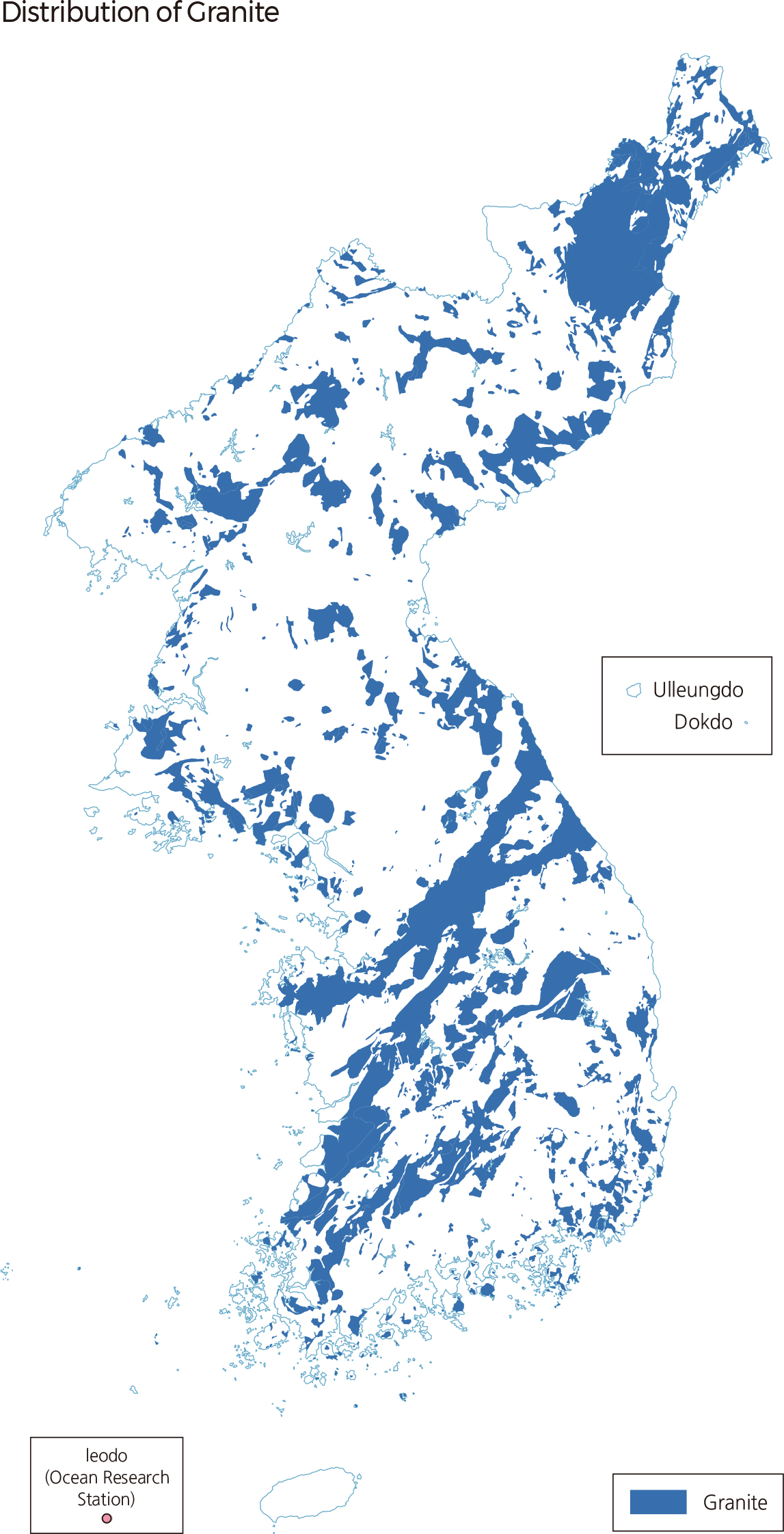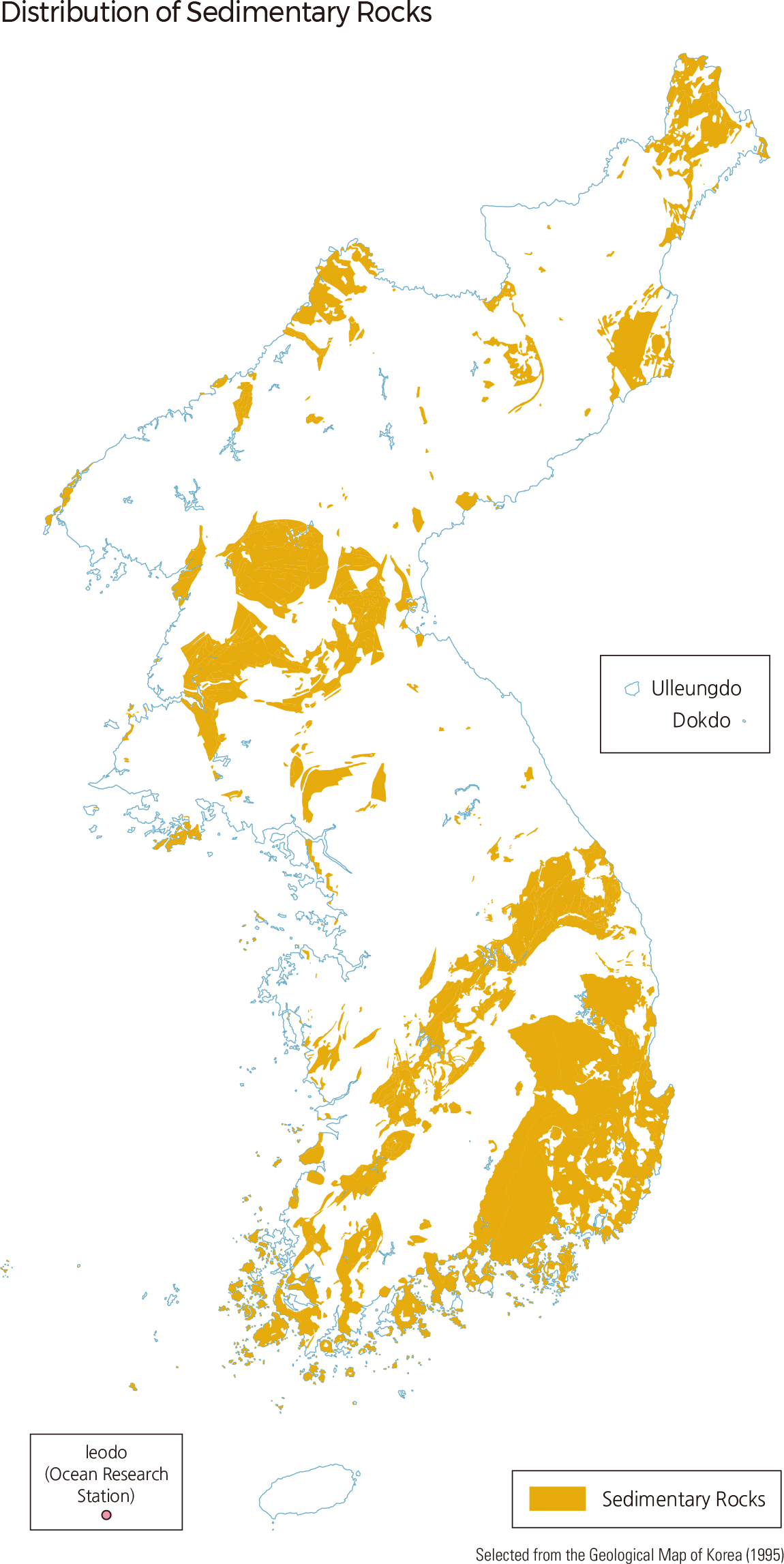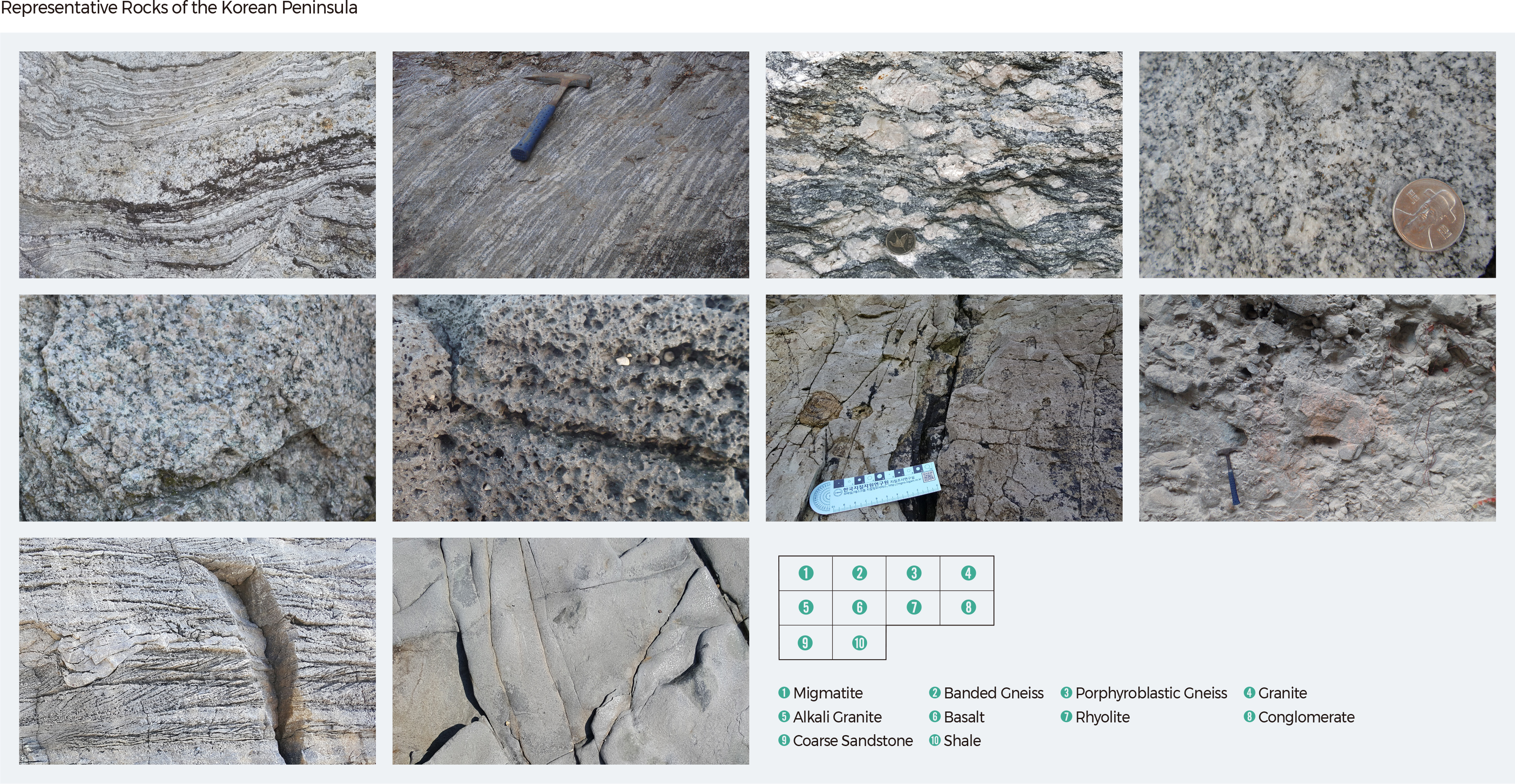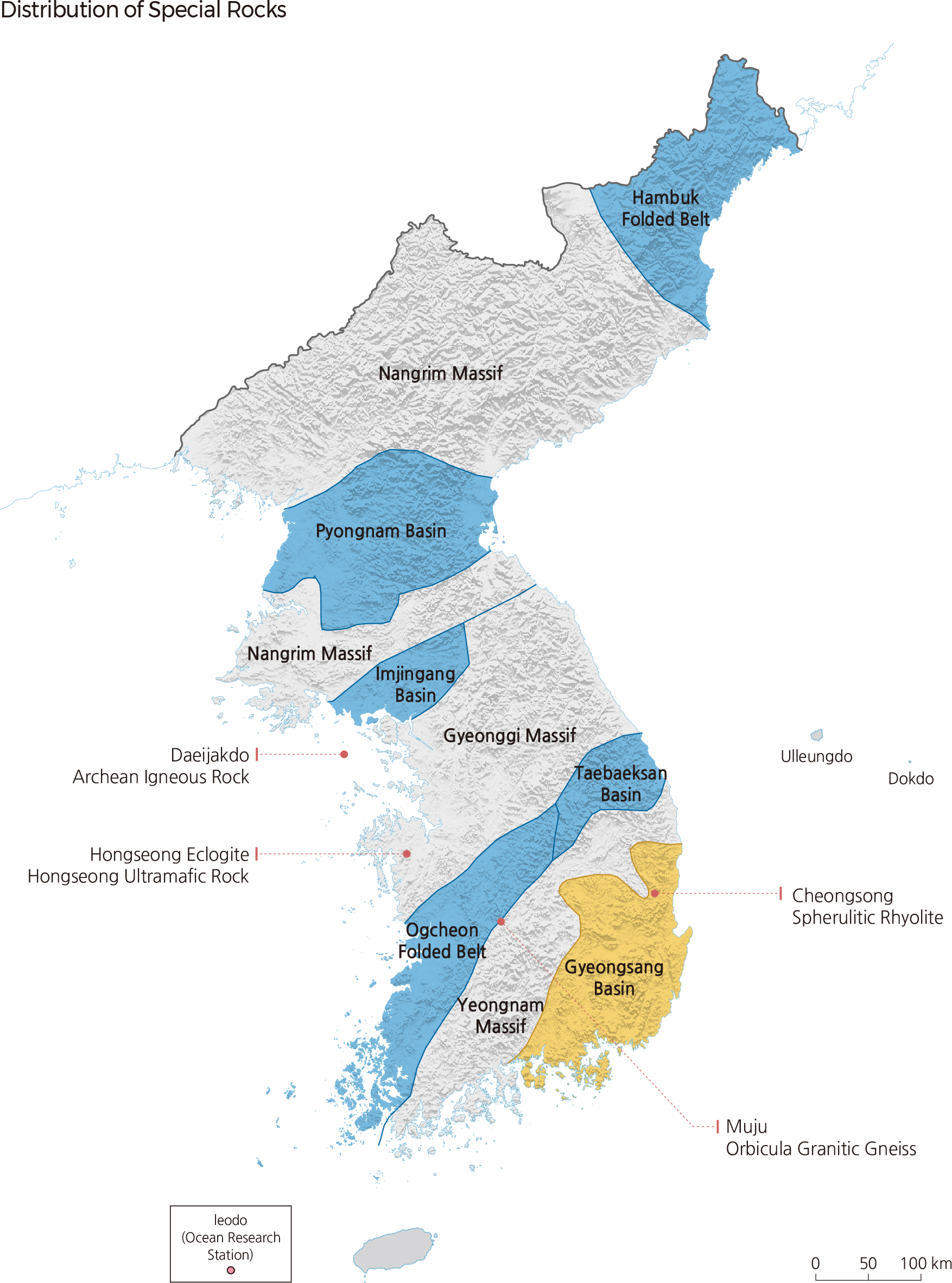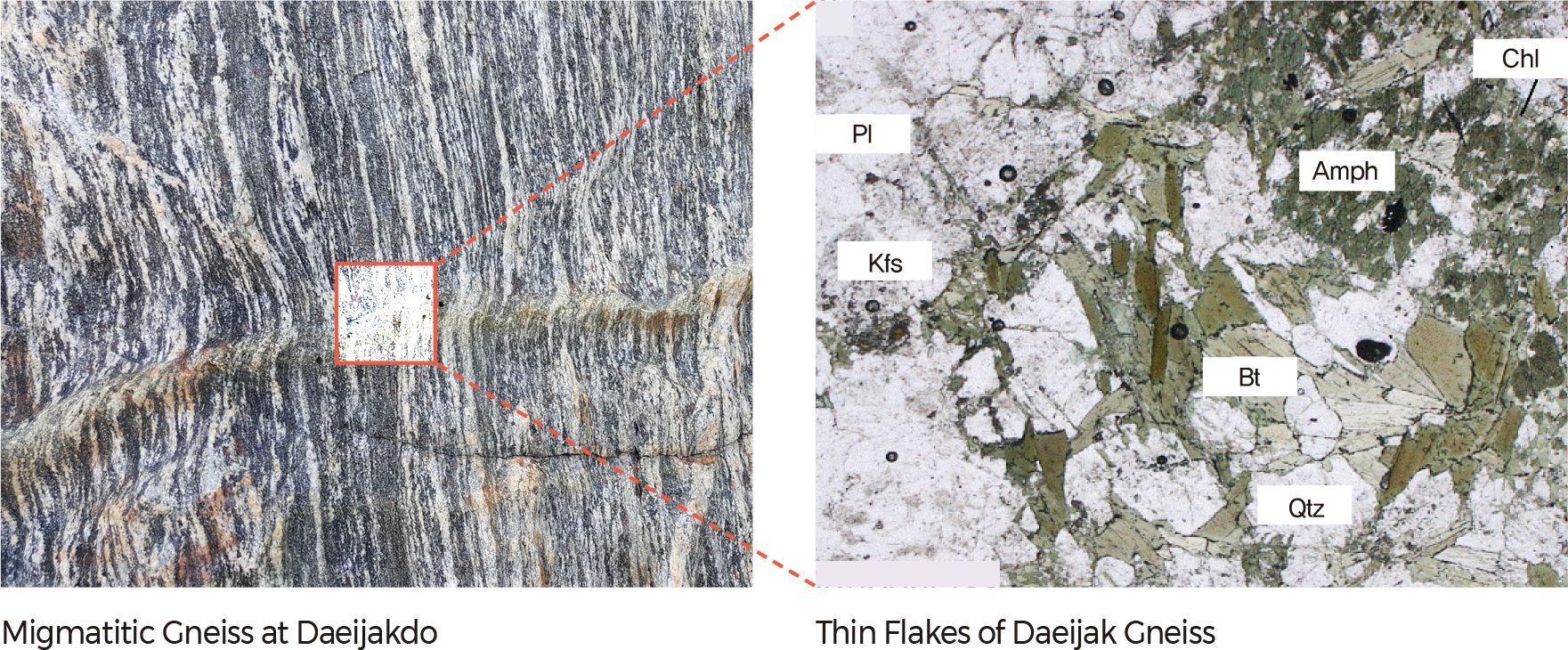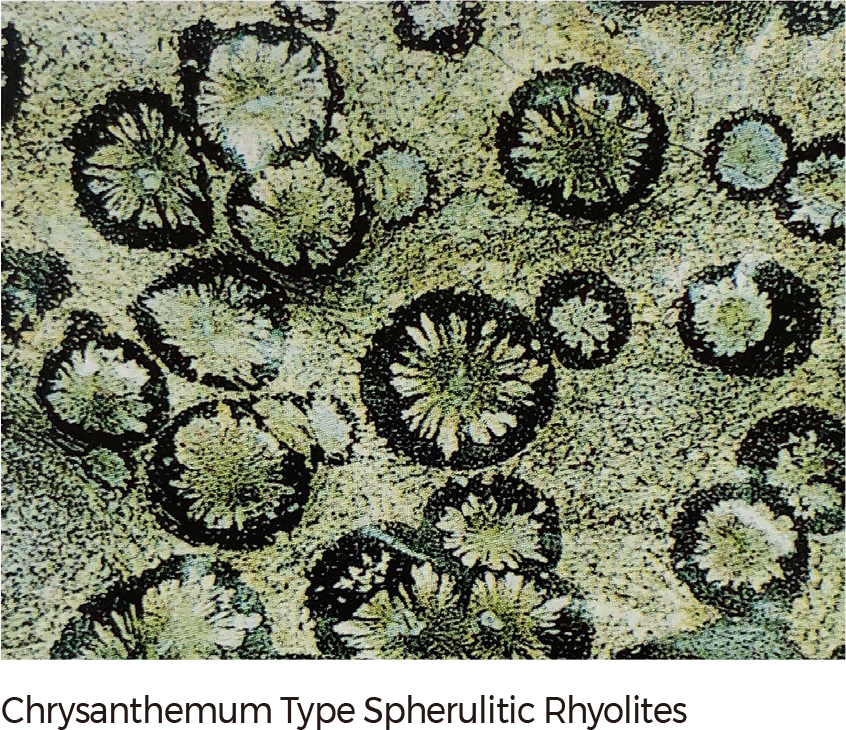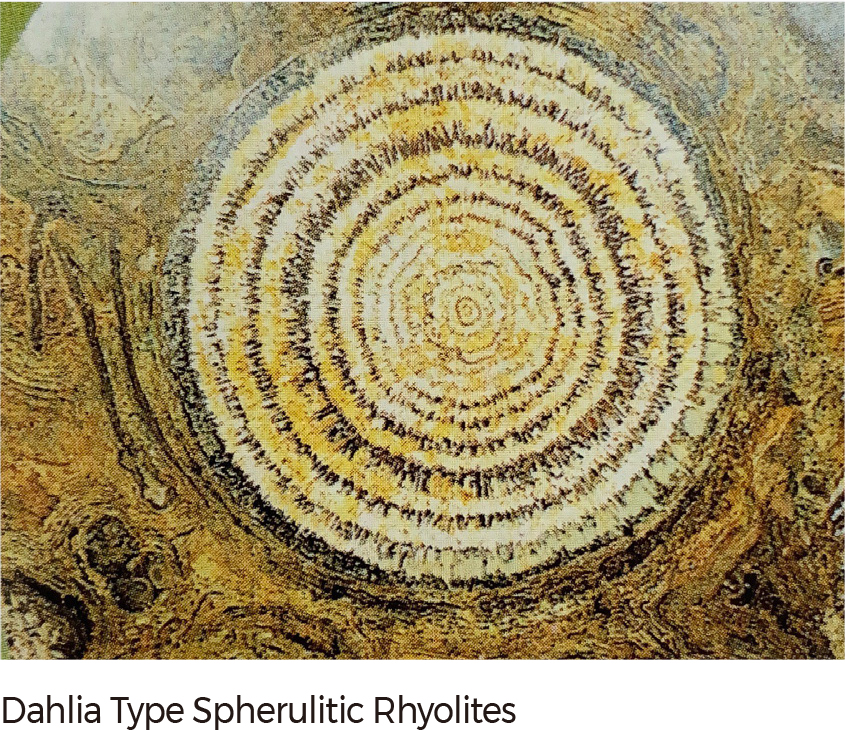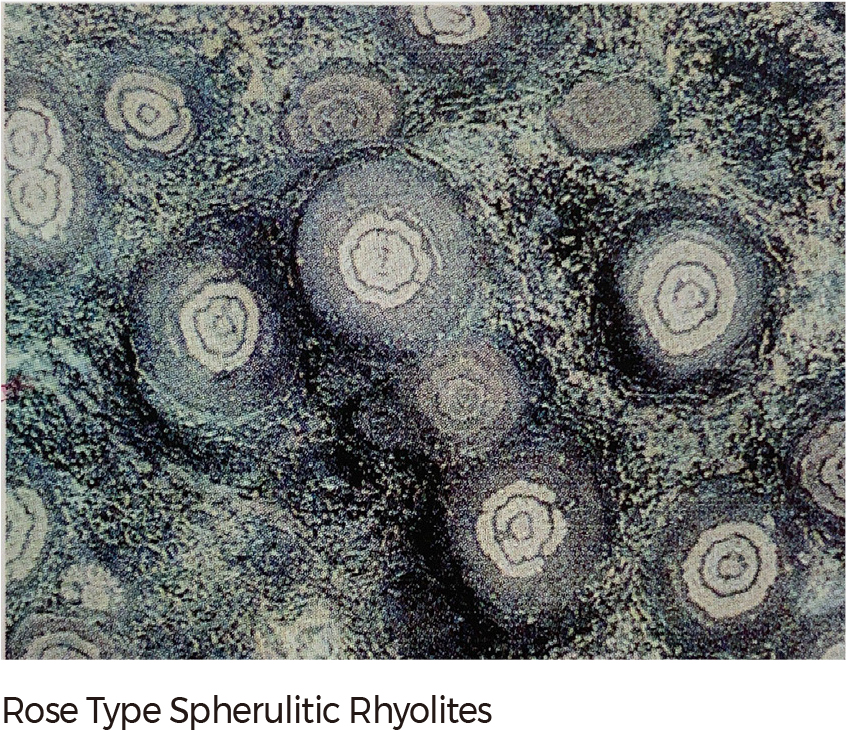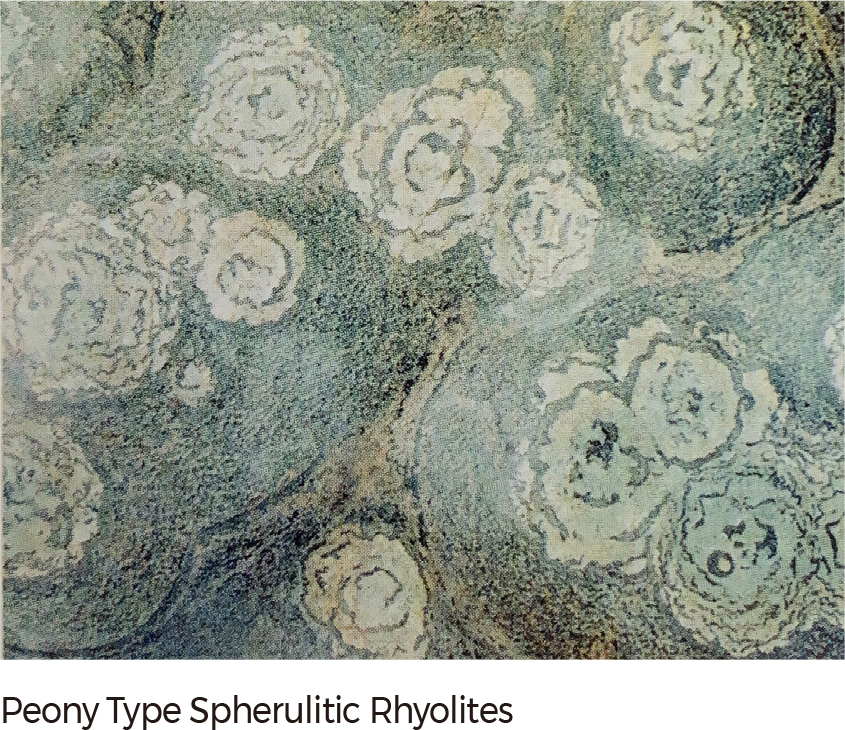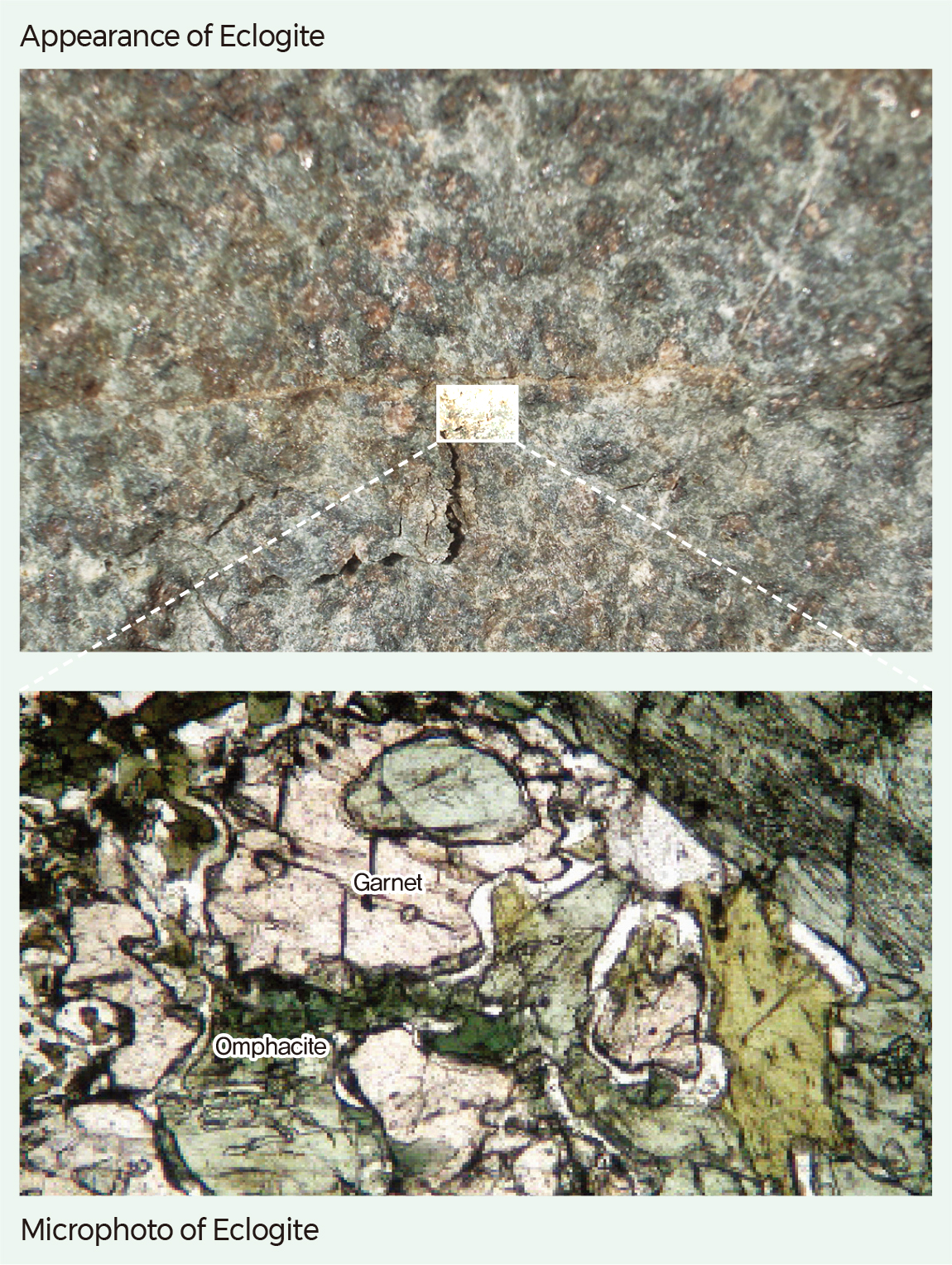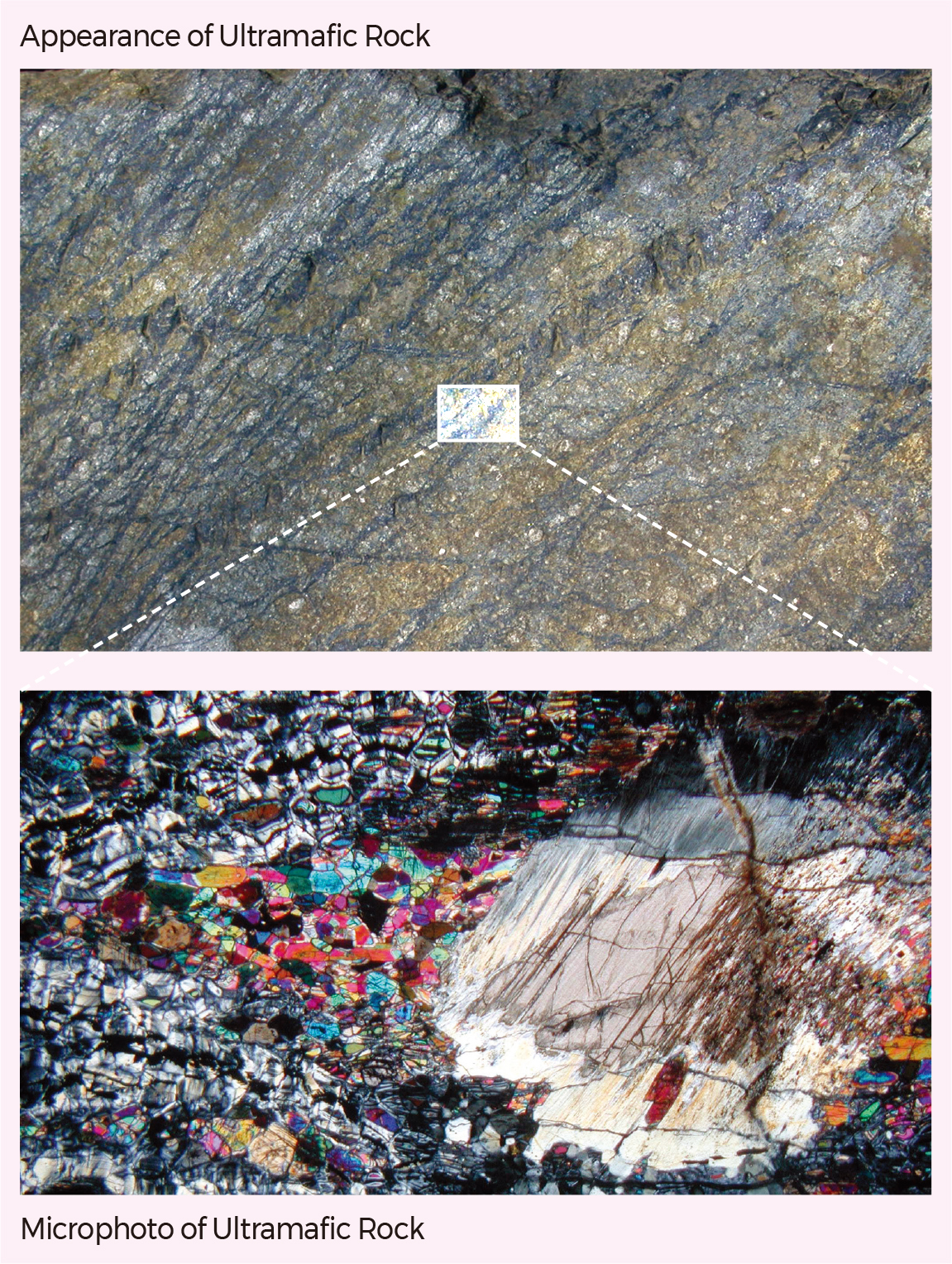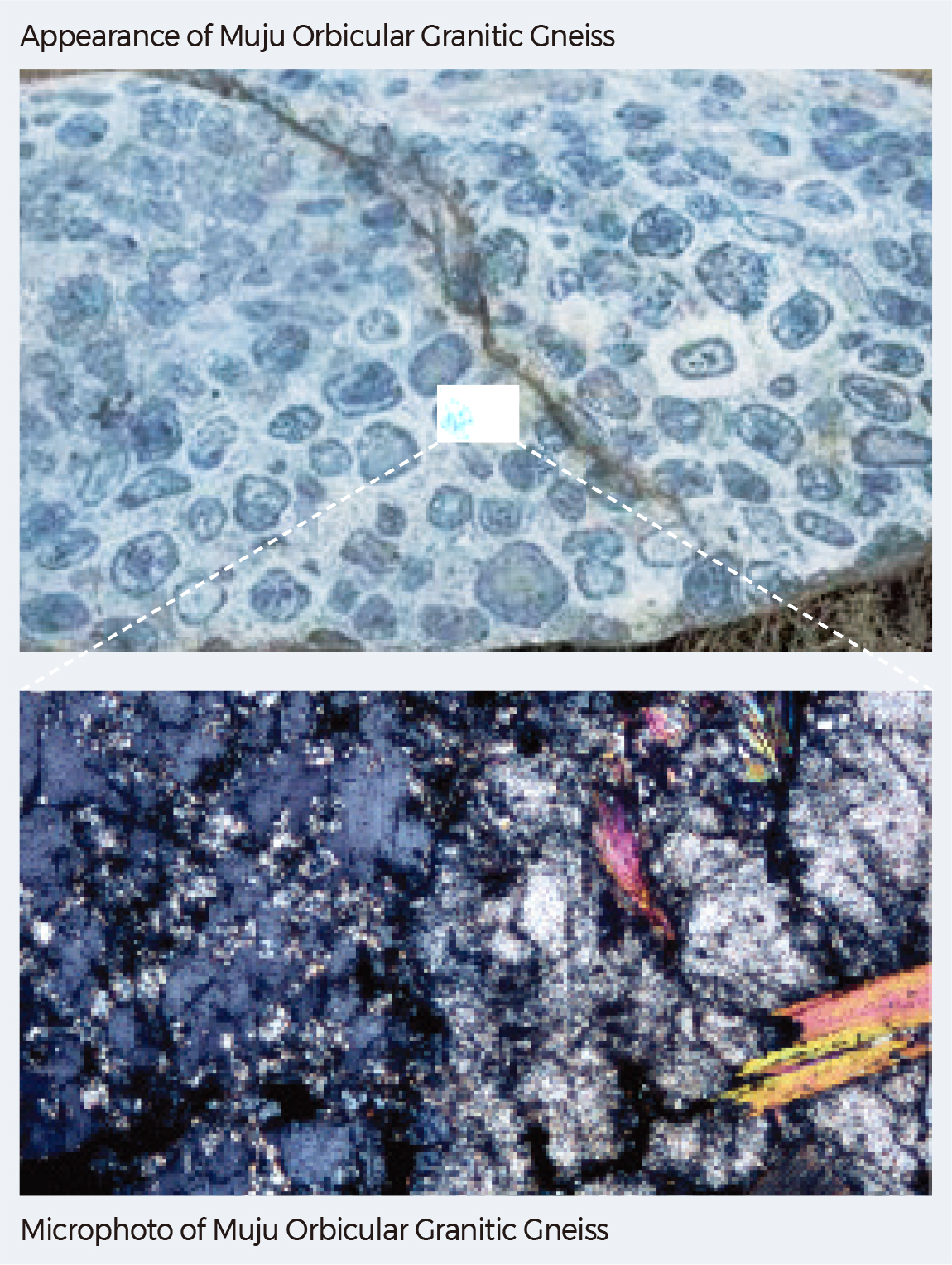English II 2020
More than two-thirds of the Korean Peninsula consists of granite and metamorphic rocks. Jurassic Daebo granite and Cretaceous Bulguksa granite are the main types of granite on the Korean Peninsula. As the Jurassic granite formed at a deeper depth than the Cretaceous granite, the Jurassic granite is more coarse-grained than the Cretaceous granite. Most granites are milk-white in color, but alkali granites show a pinkish-red color.
Metamorphic rocks consist mainly of gneiss and include schist, phyllite, quartzite, marble, and amphibolite, which formed by the metamorphism of shale, sandstone, limestone, and basic igneous rocks. The gneiss can be classified into sedimentary origin gneiss (paragneiss) and igneous origin gneiss (orthogneiss). The paragneiss commonly occurs as banded gneiss, whereas the orthogneiss occurs as porphyroblastic gneiss. These gneisses were transformed into migmatitic gneiss if they had been partially melted due to very high-grade metamorphism. Some porphyroblastic and banded gneisses were changed into augen gneiss due to strong shearing at a deep depth.
The main sedimentary rocks are shale, sandstone, conglomerate, and limestone. The Cretaceous basins, including the Gyeongsang Basin, consist of sedimentary rocks together with volcanic rocks made by cooling lava, and tuff (pyroclasitc rocks made by volcanic eruptions). These volcanic rocks and tuffs are mostly rhyolitic and andesitic rocks having acidic and intermdiate composition. The rhyolitic and andesitic volcanic and pyroclastic rocks constitute the stratovolcanic part of Baekdusan, Ulleungdo, and Dokdo. By contrast, the lava plateaus under Baekdusan and the shield volcanic part of Jejudo are composed of basic igneous rocks such as basalt and trachytic-basalt. Obsidian (volcanic glass)was formed by quick cooling of lava in Baekdusan, while scoria and pumice, which are pyroclastic rocks with many vesicles, are found in Baekdusan and Jejudo. Red scoria commonly occurs in and around cinder cones on Jejudo. The Korean side of Baekdusan is covered by white pumice, creating the illusion of a snowy white peak year-round. As such, Baekdusan translates to the mountain with a white head in Korean.
The unique and important rocks on the Korean Peninsula are eclogite and serpentinized ultramafic rock in the Hongseong area. Eclogite can be formed by the metamorphism of mafic igneous rocks (basalt or gabbro) in the subducted oceanic or continental crust at a depth deeper than 50 km in the subduction zone or in the early stage of the collision zone.
Eclogite is a beautiful rock with red garnets in a green matrix consisting of omphacite. The occurrence of eclogite on a continental plate indicates that there was once an ocean and a subduction zone that disappeared by a continental collision during which the eclogite was pushed up to the surface from a deep depth.
The serpentinized ultramafic rock found with the eclogite in the Hongseong area was originally lithospheric mantle formed at a depth of several tens of kilometers below the surface, and was uplifted to the surface during a continental collision. On the way to the surface, an ultramafic rock was metamorphosed into blueish-green serpentinite consisting of serpentine minerals formed by the reaction between the minerals in the ultramafic rock and water supplied from the surrounding area. Orthopyroxene often occurs as porphyroblast relicts within serpentinite because olivine and clinopyroxene in the ultramafic rocks are more easily metamorphosed into serpentine compared to orthopyroxene.
The oldest rock appearing in Korea is the tonalitic or granitic diorite granite, formed 2.58 Ga, appearing on Daeijakdo on the west coast. These granites were formed in the environment of continental volcanic arcs such as the Andes. In this rock, leucocratic layers made of quartz and feldspar and melanocratic layers made of amphibole appear irregularly alternating in various thicknesses.
The orbicular granite gneiss in Muju and spherulitic rhyolite in Cheongsong are rare, unique rocks on the Korean Peninsula. The Muju orbicular granite gneiss with orbicular texture formed from the metasedimentary xenoliths that sank within the parent magma of leucocratic mica granites. The xenoliths were metamorphosed into orbicules due to thermal metamorphism at around 1867±4 Ma. The orbicular granite gneiss in Muju is the only orbicular rock formed by metamorphism in the Korean Peninsula.
Spherulitic rhyolites found in Cheongsong formed during the fast cooling of dykes at a shallow depth. The chrysanthemum, dandelion, dahlia, and sunflower types were formed when specific minerals grew in a particular direction during fast cooling, while the peony, rose, and innominate types were formed by the growth of minerals in layers due to relatively slow diffusion during cooling. The apricot-patterned spherulites were formed during a medium cooling rate. The spherulitic rhyolites formed between 50–48 Ma. |
